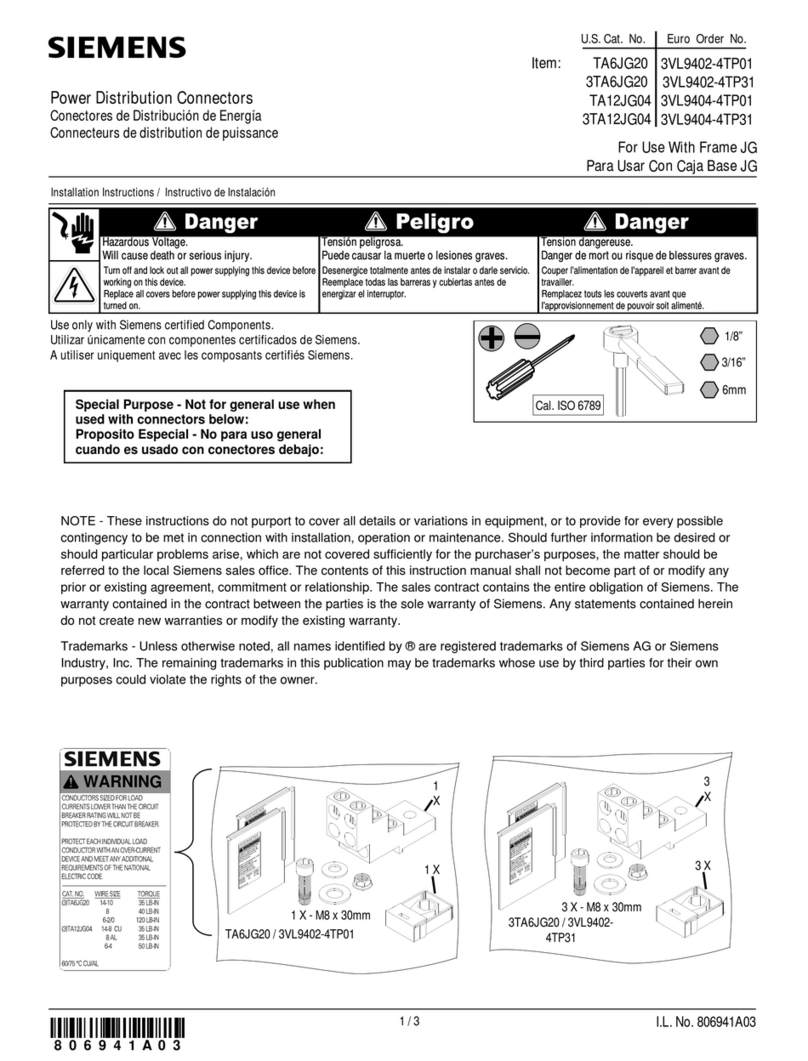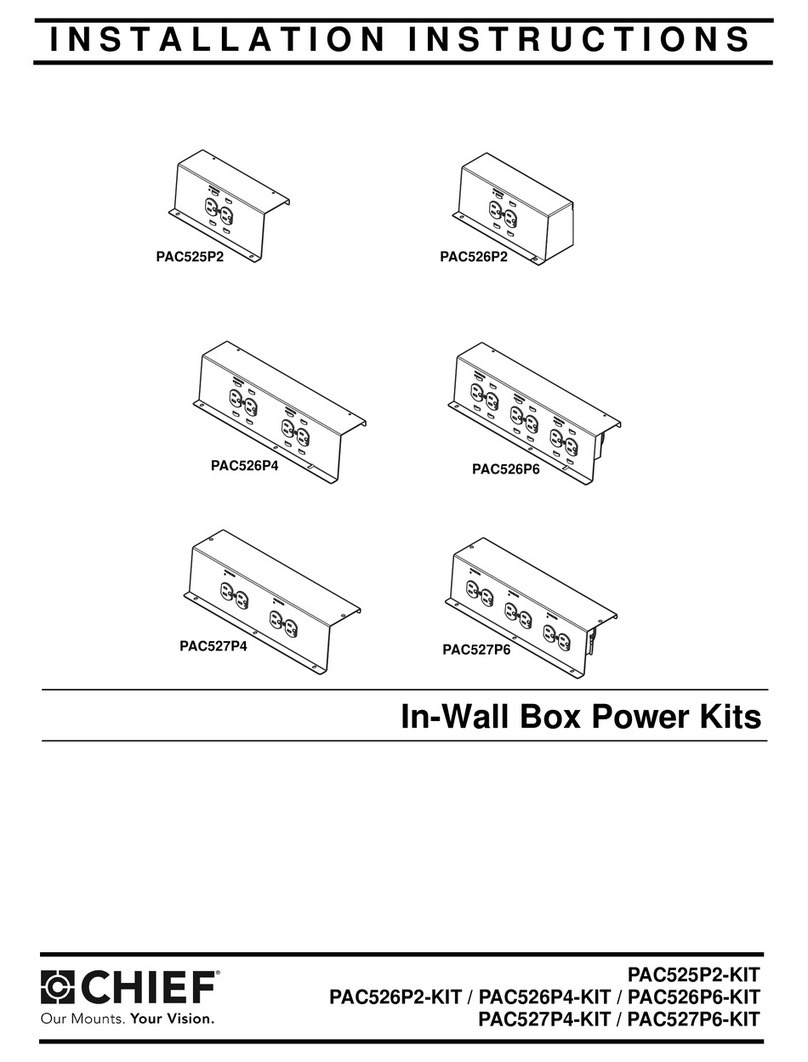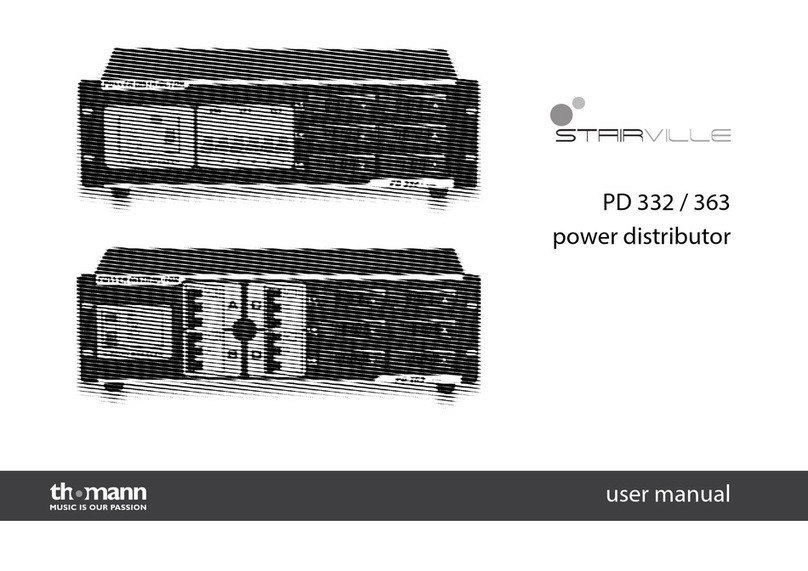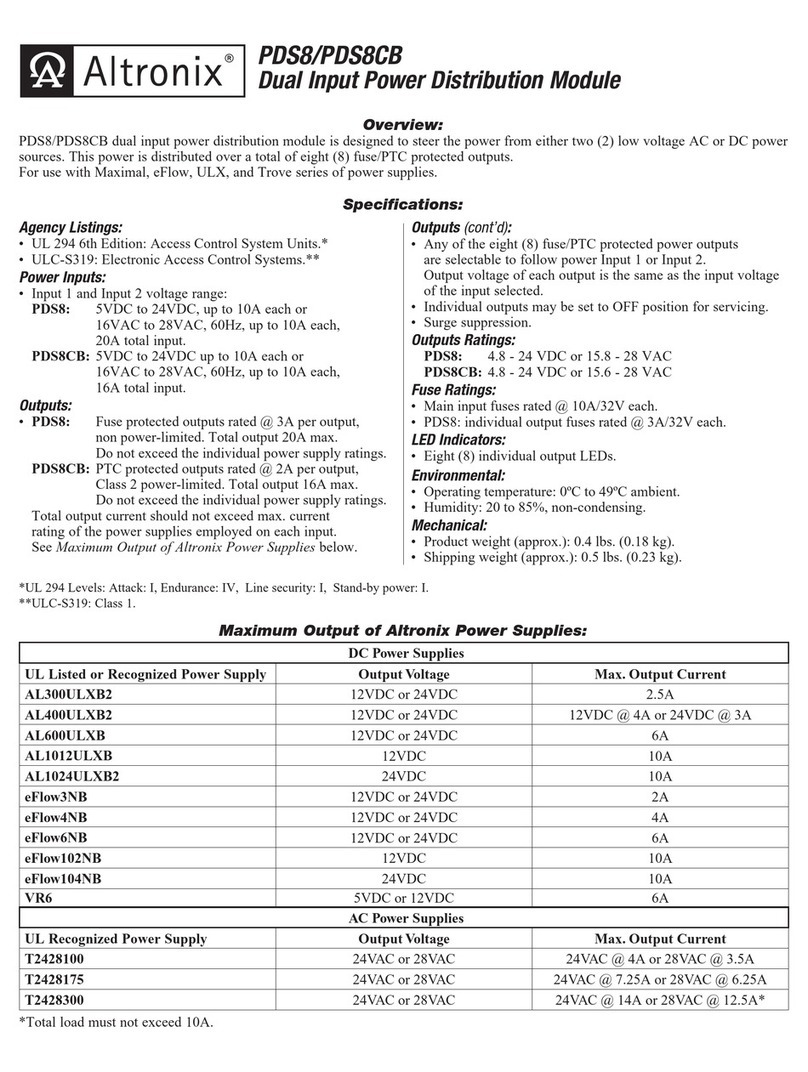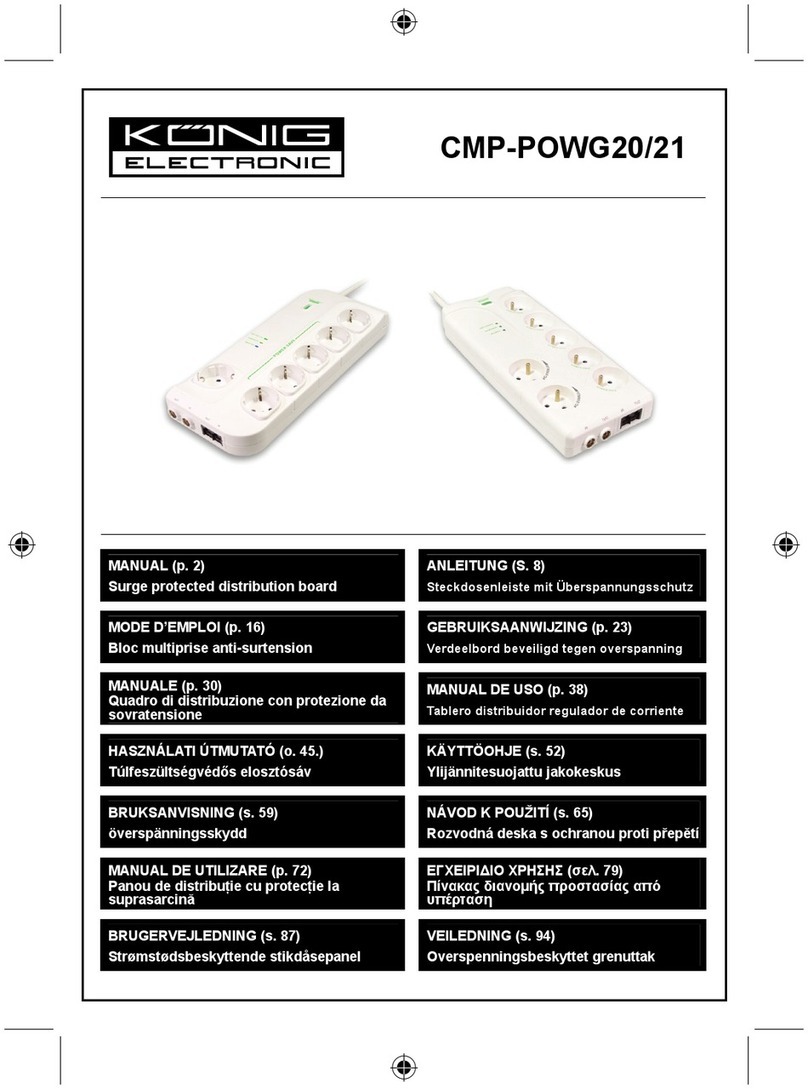Datwyler IPDU-A Series User manual

IPDU-A Series User Manual
1
IPDU-A Series User Manual

IPDU-A Series User Manual
2
Contents
. Introduction
Ⅰ..................................................................................................................3
. Main functions
Ⅱ.............................................................................................................3
. Monitoring m
Ⅲethod......................................................................................................3
. Applications
Ⅳ.................................................................................................................3
. Product sketch
Ⅴ.............................................................................................................4
. Mounting method
Ⅶ........................................................................................................4
. Hardware introduction
Ⅷ................................................................................................5
1. Front panel introduction........................................................................................5
2.Initialization...........................................................................................................5
3. Hardware settings..................................................................................................7
4. Daisy-chain connection.........................................................................................8
. Software introduction
Ⅸ..................................................................................................9
1. Web browser access..............................................................................................9
2. SNMP access........................................................................................................14
3. Telnet access........................................................................................................16
.Technical Specification
Ⅹ..............................................................................................17

IPDU-A Series User Manual
3
IPDU-A Series User Manual
. Introduction
Ⅰ
The Hot-Swappable andAC/DC integration IPDU-ASeries is our company’s newest scientific
achievement in the power distribution filed in 2016. On the trend of future power distribution
management technology development, combining the technology requirement of the modern data
center application environment, adopting key technology with fully independent intellectual property, the
product IPDU-ASeries is designed in combination of network communication, AC/DC integration, power
distribution, network management and hot-swappable technology.
. Main functions
Ⅱ
1. Monitor input voltage
2. Monitor total load current
3. Monitor total power (kW)
4. Monitor energy consumption (kWh)
5. Monitor the micro-environment in the cabinet
. Monitoring method
Ⅲ
User can access the IPDU-ASeries through WEB interface, SNMP(v1) or Telnet command console.
IPDU-A Series can be also monitored and managed through centralized management software--- CLEVER
Manager.
. Applications
Ⅳ
Apply to single phase 100VAC~240VAC up to 63Amps, three phase 200VAC~400VAC up to 32Amps and
100VDC~350VDC power source. The outlet type and quantity can be customized at request.
IPDU-A Series is widely applied to the data centers of industries like network communication, telecom,
electric power, finance, insurance, aerospace, transportation, information processing, education, medical,
E-government etc.

IPDU-A Series User Manual
4
. Product sketch
Ⅴ
. Instruction on the RS485 port and RJ45 terminal pin
Ⅵ
. Mounting method
Ⅶ
IPDU-A Series products can be vertically mounted inside the racks.
Color Instructions
1.Orange & White GND
2.Orange GND
3.Green & White RS485-A
4.Blue RS485-A
5.Blue & White RS485-B
6.Green RS485-B
Brown & White GND
8. Brown GND
1. Screen: TFT screen;
2. RUN:
Run indicator;
KWH:
kWh indicator;
ALM:
Alarm indicator;
3. NET: Ethernet
port;
4. SER:
Daisy-chain port;
5. LINK:
Daisy-chain port;
6. MENU:
Menu Key;
7. UP:
Function set key;
8. DOWN:
Position selection key;
9. RESET:
Restart button;
10. T/H: Temperature/Humidity sensor port
2
3
1
6
7
8
9
4
5
10

IPDU-A Series User Manual
5
. Hardware introduction
Ⅷ
1. Front panel introduction:
Panel
composition
Function Description
RUN Run indicator States: flash frequency is 1 second
KWH kWh indicator States: flash frequency depends on the load
ALM Alarm indicator Sates: light on if there is an alarm happening
NET Ethernet port LAN/WAN Ethernet communication port
SER Daisy-chain port RS-485 daisy-chain communication port
LINK Daisy-chain port RS-485 daisy-chain communication port
MENU Menu key
To view the LCD Module displayed information, light up the LCD
Module background, save the configuration as ENTER key.
Restore to factory settings: Hold the MENU key and press the
RESET button to restore
Mute alarming: Press and hold the MENU key for 4 seconds to
turn On/Off the alarm
UP Function set key;
light up the LCD Module background, set the Master or Slave
address cord, the maximum threshold of voltage, current,
temperature and humidity from 0 to 9
DOWN Position
selection key light up the LCD Module background, to select the address cord,
maximum threshold of voltage , current, temperature and humidity
RESET Restart button Restart the device
Screen View the states display the power and environment data
T/H Temperature and
humidity sensor
port
2.Initialization
When power on, the RUN indicator will flash and the PDU works normally after initializing the LED indicator
and TFT screen. Following is the LCD displaying content introductions for the Direct Current Module,AC
single phase module and AC three phase module:
2.1 Direct Current module:
1st screen: Amps (0.1A), Voltages (220VDC), Power (0.0kW), kWh (0.0kWh) (Figure 1)
2nd screen: the temperature and humidity date (figure 2)
3rd screen: the baud rate (4800/9600/19200/38400) (Figure 3)
4th screen: the device IP, address code (from 0 to 4) (Figure 4)
5th screen: the threshold of the current (32A) and voltage (276VDC) (Figure 5)

IPDU-A Series User Manual
6
6th screen: the threshold of the temperature (40 ) and humidity℃(90%) (Figure 6)
2.2 AC single phase module:
1st screen: Amps (0.1A), Volts (220VAC), Power (0.0kW), kWh (0.0kWh) (Figure 1)
2nd screen: the temperature and humidity date (figure 2)
3rd screen: the baud rate (4800/9600/19200/38400) (Figure 3)
4th screen: the device IP, address code (from 0 to 4) (Figure 4)
5th screen: the threshold of the current (32A) and voltage (276VAC) (Figure 5)
6th screen: the threshold of the temperature (40 ) and humidity℃(90%) (Figure 6)
2.3 AC three phase module:
1st screen: L1 Amps (0.1A), Volts (220VAC), Power (0.0kW), kWh (0.0kWh) (Figure 1)
2nd screen: L2 Amps (0.1A), Volts (220VAC), Power (0.0kW), kWh (0.0kWh) (Figure 2)
3rd screen: L3Amps (0.1A), Volts (220VAC), Power (0.0kW), kWh (0.0kWh) (Figure 3)
4th screen: the temperature and humidity date (figure 4)
5th screen: the brad rate (4800/9600/19200/38400) (Figure 5)
(Figure 1)
(Figure 2)
(Figure 3)
Press MENU
Press MENU
(
Figure
1)
(Figure 2)(Figure 3)
216
VDC
00.0
A
00.0
KW
000000.0KWh
Temp
00
℃
Hum
00%
IP
192.168.
1.165
Addr 0
L1
Max
276V
32.0A
Press MENU
L1
Max
276V
32.0A
L1 216
VAC
00.0
A
00.0
KW
000000.0KWh
Temp
00℃
Hum
00%
IP
192.168.
1.165
Addr 0
Press MENU
(Figure 4)
Press
MENU
Max
40℃
99%
Baud
9600
(Figure 4)
(Figure 5)
(Figure 6)
Press
MENU
Baud
9600
(Figure 5)
Max
40℃
99%
Press MENU
(Figure 6)
Press MENU
Press MENU
Press MENU

IPDU-A Series User Manual
7
6th screen: the device IP, address code (from 0 to 4) (Figure 6)
7th screen: L1 threshold of the current (32A) and voltage ( 276VAC) (Figure 7)
8th screen: L2 threshold of the current (32A) and voltage (276VAC) (Figure 8)
9th screen: L3 threshold of the current (32A) and voltage (276VAC) (Figure 9)
10th screen: the threshold of the temperature (40 ) and hu℃midity (90%) (Figure 10)
3. Hardware settings
3.1 Address code settings: To locate the address code page(like Add -0) from the LCD screen, press DOWN
key to set the value which cycling from 4 to 0 for the master or slave address code
and press UP key to set the value which cycling from 0 to 4, the address code range
from 0 to 4.
3.2. Current or Voltage threshold settings: To locate the threshold setting page ( like L1 32.0A 276VAC);
Press DOWN key to select the value need to be set, the select position will flesh,
then press UP key to set the threshold value, the allowed maximum current is 32A
and maximum voltage is 276VAC
Note: All above settings must be saved by pressing the MENU key, and the settings will take effective after
the beep sound, otherwise, the device will without saving the settings.
(Figure 1)
(Figure 2)
(Figure 3)
Press MENU
Press MENU
(Figure 5)
(Figure 4)
Press
MENU
L3 216
VAC
00.0
A
00.0
KW
000000.0KWh
L2 216
VAC
00.0
A
00.0
KW
000000.0KWh
L1 216
VAC
00.0
A
00.0
KW
000000.0KWh
Temp
00
℃
Hum
00
%
IP
192.168.
1.165
Addr 0
L1
Max
276V
32.0A
Press MENU Press MENU Press MENU
(Figure 7)
(Figure 6)
L2
Max
276V
32.0A
Press MENU
(Figure 8)
Press
MEN
U
L3
Max
276V
32.0A
Baud
9600
Press MENU
Max
40℃
99%
(Figure 9)
(Figure 10)

IPDU-A Series User Manual
8
3.3 Restore to factory settings: Press and hold the MENU key when power on or Hold the MENU key to
press the RESET button till the screen display normally
3.4 Mute the alarming: Press and hold the MENU key for 5-6 seconds when there is an alarm to turn
off/on the alarm. When the alarm was turned on, an O in red will be displayed in the screen.
When the alarm was turned off, an F in red will be displayed in the screen.
4. Daisy-chain connection
Serial Daisy-chain mode:
(Figure 1)
4.1.
Setting one IPDU-A Series as Master unit, and the rest as Slave unit. The maximum daisy-chain is 4pcs.
Apply to IPDU-A Series 6, refer to figure 1
Ethernet Daisy-chain mode:
(Figure 2)
4.2. Connect the each PDU to the port from the HUB and connect the Net port from HUB to the internet. No
limitation for the PDU quantity. Please see Figure 2.
4.3 Connecting the Master’s net port with computer’s net port, then access via IE.

IPDU-A Series User Manual
9
. Software introduction
Ⅸ
User can access the IPDU-ASeries through WEB interface, SNMP(v1) or Telnet command console.
1. Web browser access
User can access, monitor and control the IPDU-A Series by web browser like Internet Explorer, google
chrome and etc) by input the correct IP address in the address bar. The pop-up login window is illustrated as
figure 1
Figure1
User will see the home page (as figure 2) after entering the correct user name and password in the login
dialog box.
Figure 2
Main interface includes 3 parts: Company Logo, Menu and device states.
Company
Logo
MENU

IPDU-A Series User Manual
10
A. Device state: Click the Device State(AC or DC), user can check the current, voltage, power and
energy consumption of the IPDU-A SERIES as figure 2
Input: From the drop-down list to view the power date of L1,L2 or L3(
Single phase module
does not have drop-down list
)
From the drop-down list view the power date or Master unit or Slave units. One
Master unit can support to you 4 Slave unit (Slave 1- Slave 4)
B.
Threshold setting: to set threshold of total load current. See below.
User can set up the threshold of current, voltage, temperature and humidity from the threshold
settings page as figure 3.
Figure 3
Set up the threshold of current, voltage, temperature and humidity
The current of single phase range from 0-63A; three phase range from 0-32A and Direct current
range from 0-60A
The input voltage range from 170-276VAC
The temperate range from 0-40 and humidity range from 0℃-99%

IPDU-A Series User Manual
11
C.
Device Settings as figure 4
a.
Device Settings
Device Name: fill the device name customer wants to define in the blank, then save it.
Web server port
Work model: Revise master and slave mode, to set slave1,2......(Virtual Value:1-4)
b.
Energy Setting:
Clear energy line1:Click button.
(The same operation for Line 2 and Line3 in 3phase products.)
Figure
4
D.
User settings as figure 5.
Figure 5

IPDU-A Series User Manual
12
U
ser can revise the user name and password,the save it (the Max. length of user name and password is 16
digits.)
E.
Networking Setting as figure 6
Figure 6
Networking Setting: System IP: 192.168.1.163 (factory default IP Address)
Subnet Mask: 255.255.255.0
Default Gateway: 192.168.1.1
DNS: factory default is 202.96.128.86
Please ensure the DNS address is correct so that email can be sent out.
Note: Restarting software is necessary after a modification of the network settings.
F. SNMP Setting , see below figure 7
The default get community and Set community is “public” and “private”. User can modify according to the
specific application.
Fill in the trap address of SNMP management platform, trap alarm will be sent automatically. There are 2
Trap addresses.
Note: Restarting software is necessary after SNMP setting.
Telnet settings
Select from “Enable” or “Disable” to configure the Telnet feature, the default state is enabled.

IPDU-A Series User Manual
13
Figure 7
G. E-mail Alarm Settings as figure 8:
Set the SMTP including SMTP account, password, SMTP server and port, then save. Click “Testing” and fill
in the testing email address. If the test email is received, the setting is effective. See below interface.
Figure 8

IPDU-A Series User Manual
14
H. Restart as figure 9
Select Activity: user can restart the software or restore to factory default settings. After click “Save”, when
IPDU-A series buzzing, the software restart is successful. See below:
Note: Press and hold the MENU button when power on to restore to factory settings.
Figure 9
2. SNMP access
SNMP access:SNMP(V1)
OID
Instructions
Device Name 1.3.6.1.4.1.30966.10.3.1.1
Master device name
mVoltageA 1.3.6.1.4.1.30966.10.3.2.1
Voltage of L1 for master device
mVoltage B 1.3.6.1.4.1.30966.10.3.2.2
Voltage of L2 for master device
mVoltage C 1.3.6.1.4.1.30966.10.3.2.3
Voltage of L3 for master device
mCurrentA 1.3.6.1.4.1.30966.10.3.2.4
Current of L1 for master device
mCurrent B 1.3.6.1.4.1.30966.10.3.2.5
Current of L2 for master device
mCurrent C 1.3.6.1.4.1.30966.10.3.2.6
Current of L3 for master device
mEnergyA 1.3.6.1.4.1.30966.10.3.2.7
Power energy of L1 for master device
mEnergy B 1.3.6.1.4.1.30966.10.3.2.8
Power energy of L2 for master device
mEnergy C 1.3.6.1.4.1.30966.10.3.2.9
Power energy of L3 for master device
mTem 1.3.6.1.4.1.30966.10.3.2.10 The temperature value of Master

IPDU-A Series User Manual
15
mHum 1.3.6.1.4.1.30966.10.3.2.11 The humidity value of Master
sOneVoltage A 1.3.6.1.4.1.30966.10.3.2.12
Voltage of L1 for slave 1
sOneVoltage B 1.3.6.1.4.1.30966.10.3.2.13
Voltage of L2 for slave 1
sOneVoltage C 1.3.6.1.4.1.30966.10.3.2.14
Voltage of L3 for slave 1
sOneCurrentA 1.3.6.1.4.1.30966.10.3.2.15
Current of L1 for slave 1
sOneCurrent B 1.3.6.1.4.1.30966.10.3.2.16
Current of L2 for slave 1
sOneCurrent C 1.3.6.1.4.1.30966.10.3.2.17
Current of L3 for slave 1
sOneEnergyA 1.3.6.1.4.1.30966.10.3.2.18
Power energy of L1 for slave 1
sOneEnergy B 1.3.6.1.4.1.30966.10.3.2.19
Power energy of L2 for slave 1
sOneEnergy C 1.3.6.1.4.1.30966.10.3.2.20
Power energy of L3 for slave 1
sOneTem 1.3.6.1.4.1.30966.10.3.2.21 The temperature value of Slave 1
sOneHum 1.3.6.1.4.1.30966.10.3.2.22 The temperature value of Slave 1
sTwoVoltage A 1.3.6.1.4.1.30966.10.3.2.23
Voltage of L1 for slave 2
sTwoVoltage B 1.3.6.1.4.1.30966.10.3.2.24
Voltage of L2 for slave 2
sTwoVoltage C 1.3.6.1.4.1.30966.10.3.2.25
Voltage of L3 for slave 2
sTwoCurrent A 1.3.6.1.4.1.30966.10.3.2.26
Current of L1 for slave 2
sTwoCurrent B 1.3.6.1.4.1.30966.10.3.2.27
Current of L2 for slave 2
sTwoCurrent C 1.3.6.1.4.1.30966.10.3.2.28
Current of L3 for slave 2
sTwoEnergyA 1.3.6.1.4.1.30966.10.3.2.29
Power energy of L1 for slave 2
sTwoEnergy B 1.3.6.1.4.1.30966.10.3.2.30
Power energy of L2 for slave 2
sTwoEnergy C 1.3.6.1.4.1.30966.10.3.2.31
Power energy of L3 for slave 2
sTwoTem 1.3.6.1.4.1.30966.10.3.2.32 The temperature value of Slave 2
sTwoHum 1.3.6.1.4.1.30966.10.3.2.33 The temperature value of Slave 2
sThreeVoltage A 1.3.6.1.4.1.30966.10.3.2.34
Voltage of L1 for slave 3
sThreeVoltage B 1.3.6.1.4.1.30966.10.3.2.35
Voltage of L2 for slave 3
sThreeVoltage C 1.3.6.1.4.1.30966.10.3.2.36
Voltage of L3 for slave 3
sThreeCurrentA 1.3.6.1.4.1.30966.10.3.2.37
Current of L1 for slave 3
sThreeCurrent B 1.3.6.1.4.1.30966.10.3.2.38
Current of L2 for slave 3
sThreeCurrent C 1.3.6.1.4.1.30966.10.3.2.39
Current of L3 for slave 3
sThreeEnergyA 1.3.6.1.4.1.30966.10.3.2.40
Power energy of L1 for slave 3
sThreeEnergy B 1.3.6.1.4.1.30966.10.3.2.41
Power energy of L2 for slave 3
sThreeEnergy C 1.3.6.1.4.1.30966.10.3.2.42
Power energy of L3 for slave 3

IPDU-A Series User Manual
16
sThreeTem 1.3.6.1.4.1.30966.10.3.2.43 The temperature value of Slave 3
sThreeHum 1.3.6.1.4.1.30966.10.3.2.44 The temperature value of Slave 3
sFourVoltage A 1.3.6.1.4.1.30966.10.3.2.45
Voltage of L1 for slave 4
sFourVoltage B 1.3.6.1.4.1.30966.10.3.2.46
Voltage of L2 for slave 4
sFourVoltage C 1.3.6.1.4.1.30966.10.3.2.47
Voltage of L3 for slave 4
sFourCurrentA 1.3.6.1.4.1.30966.10.3.2.48
Current of L1 for slave 4
sFourCurrent B 1.3.6.1.4.1.30966.10.3.2.49
Current of L2 for slave 4
sFourCurrent C 1.3.6.1.4.1.30966.10.3.2.50
Current of L3 for slave 4
sFourEnergyA 1.3.6.1.4.1.30966.10.3.2.51
Power energy of L1 for slave 4
sFourEnergy B 1.3.6.1.4.1.30966.10.3.2.52
Power energy of L2 for slave 4
sFourEnergy C 1.3.6.1.4.1.30966.10.3.2.53
Power energy of L3 for slave 4
sFourTem 1.3.6.1.4.1.30966.10.3.2.54 The temperature value of Slave 4
sFourHum 1.3.6.1.4.1.30966.10.3.2.55 The temperature value of Slave 4
3. Telnet access
The application of Telnet enable the user to remotely manager the PDU easily. The user can
monitor and manage the device by entry the command line from the Telnet program. Telnet require the
the customer terminal from the PC and there are free software like PUTTY available. The main
command line are as following: STATUS、REBOOT、RESET、HELP
A、STATUS
“STATUS” command line can be used to view the device states like amps/volts/kWh or temperature
/humidity:
Command form:STATUS【INDEX】
【INDEX】: 0 is master, 1-4 is slave
For example:status 0:To view the amps/volts/kWh and temperature/humidity of the Master unit
Note: the actual value should be 10time of displayed one
B、REBOOT
Entry REBOOT command line to restart the device.
C、RESET
Entry RESET command line to restore to factory settings.

IPDU-A Series User Manual
17
.
ⅩTechnical Specification
No.
Item Parameters
1 Input
Single
phase
Rating voltage 110/220V 50/60HZ
The max current 16A、32A、63A
Three
phase
Rating voltage 380V 50/60HZ
The max current 3×16A、3×32A
Direct
current
Rating voltage 240V /336V
The max current
40A / 60A
Cable Spec 16A:3×2.5mm
2
×3M 32A:3×6.0mm
2
×3M
63A:3×16.0mm
2
×3M
3×16A:5×2.5mm
2
×3M 3×32A:5×6.0mm
2
×3M
Input terminal
16A input:3×2.5mm
2
×3M IEC60320 C20 input
32A input:3×6.0mm
2
×3M IEC60309 industrial plug
63A input:3×16.0mm
2
×3M IEC60309 industrial
plug
3×16A input:5×2.5 mm
2
×3M IEC60309 industrial
plug
3×32A input:5×6 mm
2
×3M IEC60309 industrial
plug
Overload protector Circuit breaker(optional)
2 Output
Single
phase
Rating voltage 110/220V
The max
current 16A、32A、63A
Three
phase
Rating voltage 220V
The max
current 3×16A、3×32A
Direct
current
Rating voltage
240V /336V
The max current
40A / 60A
Outlet standard Optional
Outlet quantity Optional
3 Display
Display method LCD display
Display contents Amps/volts/kWh/kW, IP address, address code, the
temperature/humidity
Accu
racy
Voltage
Accuracy:±(1﹪+3byte)
Resolution:1V Respond time:400ms
Display method:LCD; Display direction:
Vertical
Current
Accuracy:±(1﹪+1byte)
Resolution:100mA Respond time:
400ms
Display method:LCD; Display direction:

IPDU-A Series User Manual
18
Vertical
kWh Accuracy:±1﹪
Resolution:0.1kWh Respond time:400ms
Display method:LCD; Display direction:Vertical
5
Physical Spec
Material ABS+PC
Color Black
Dimension
Build-in IPDU-A SERIES
modular 155mm
Hot-Swap IPDU-A
SERIES modular 180mm
6 Installation Vertical
Monitor
Total load current
7
Input Voltage
Total energy consumption(kWh)
Total Power (kW)
Temperature/humidity
8 Setting
Threshold ofAmps/Volts/Temperature and humidity
Email alarm address
HTTP
SNMP(v1)
Network(IP, gateway, subnet mask, DNS)
9 Alarm
System
default
alarm
When current exceed Max
When voltage exceed Max
User
defined
alarm
When current exceed the threshold
When voltage exceed the threshold
When Temperature/humidity exceed the threshold
Alarm
Buzzer sounds
Send E-mail to administrator automatically
SNMP sends trap alarm information
10 Central
management Compatible with CLEVER Manager software to do central management
11 Access Web based, access via web browsers like IE, Firefox and Google
SNMP v1 support
Via console of serial communication
12 User
Management User name and password configurable
13 Environment
Temperature 0 ~45℃ ℃
Relative humidity
30~90%
Storage -20 ~ 70℃ ℃
Table of contents
Popular Power Distribution Unit manuals by other brands
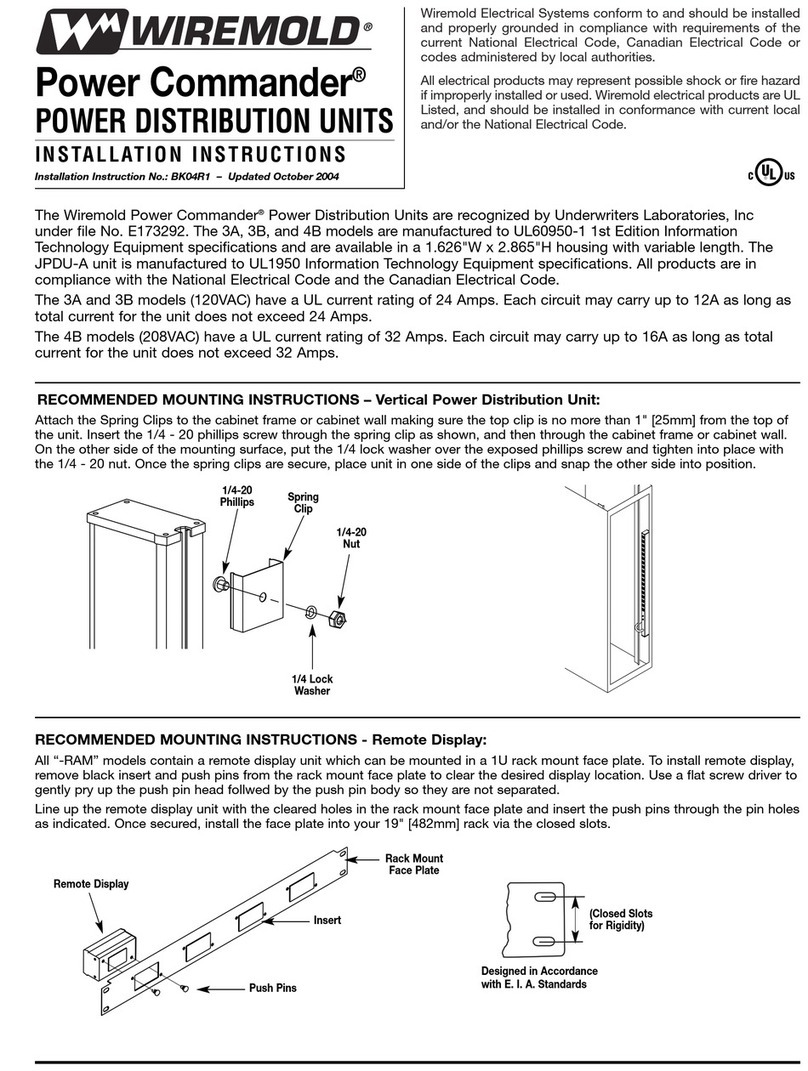
Wiremold
Wiremold Power Commander installation instructions
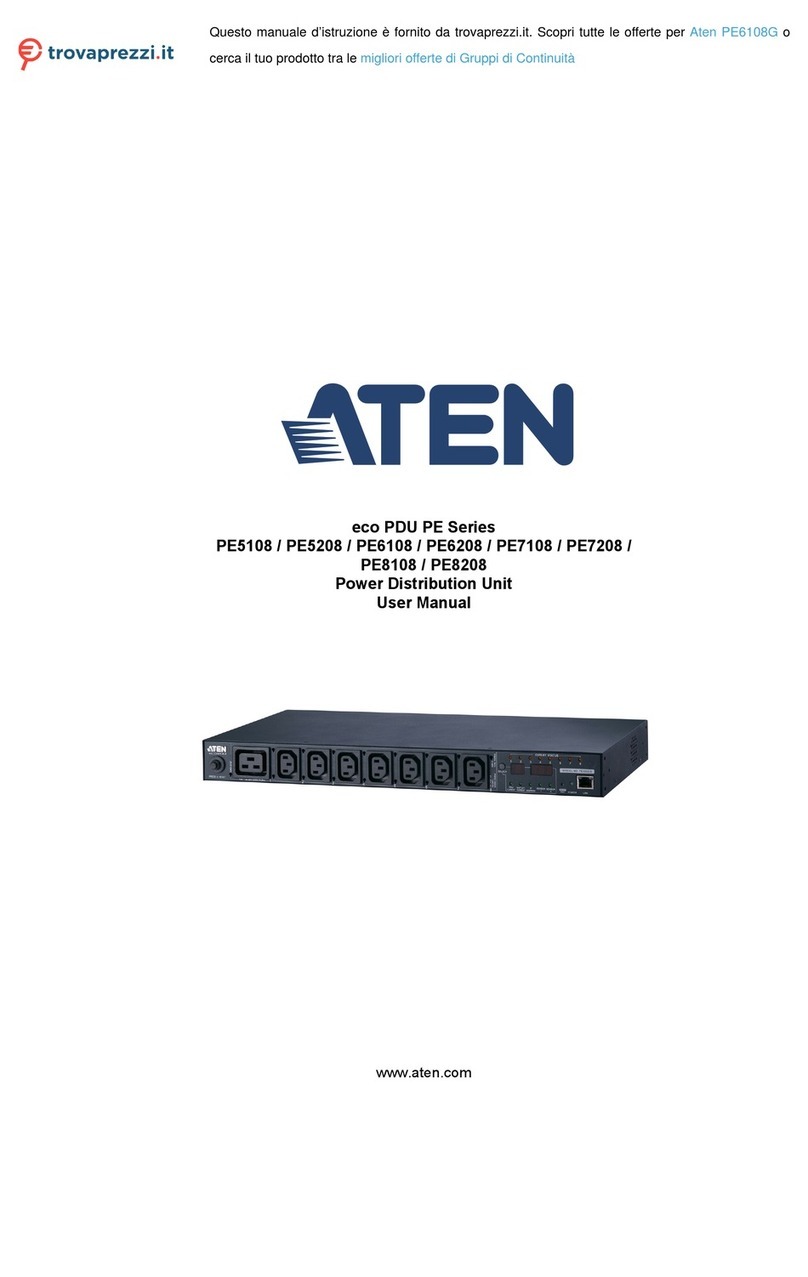
ATEN
ATEN PE Series user manual

WTI
WTI CPM Series quick start guide
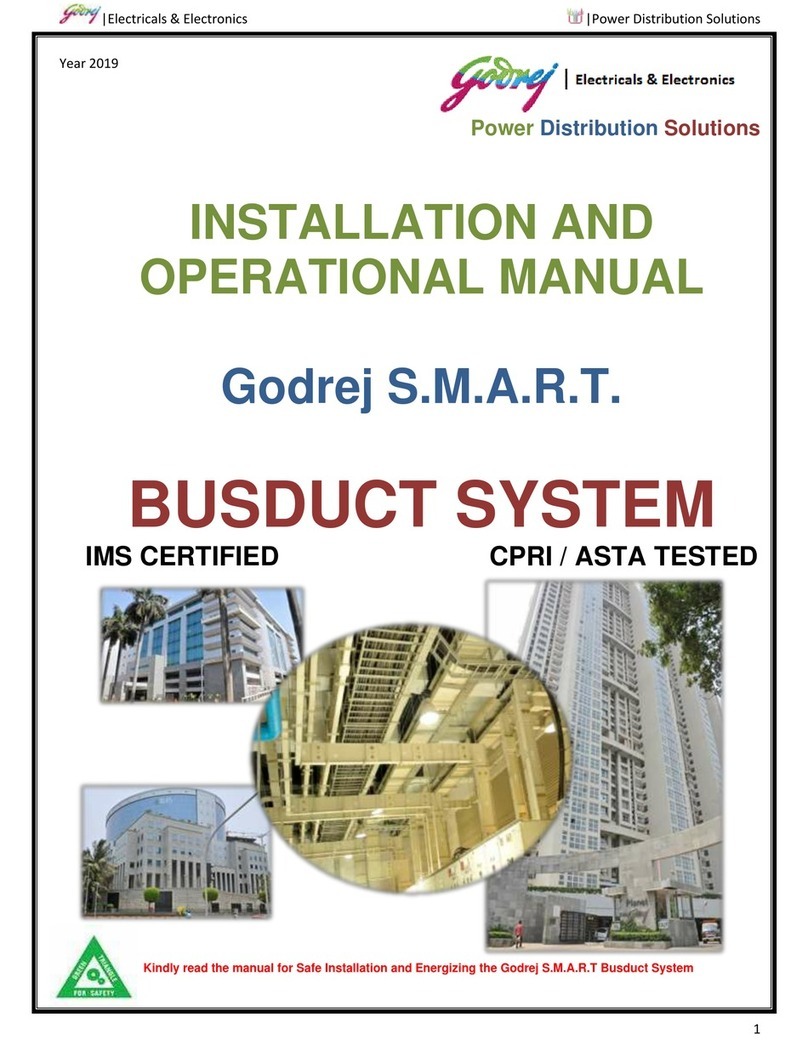
Godrej
Godrej S.M.A.R.T. Installation and operational manual

Wöhner
Wöhner CRITO 185 Power quick start guide
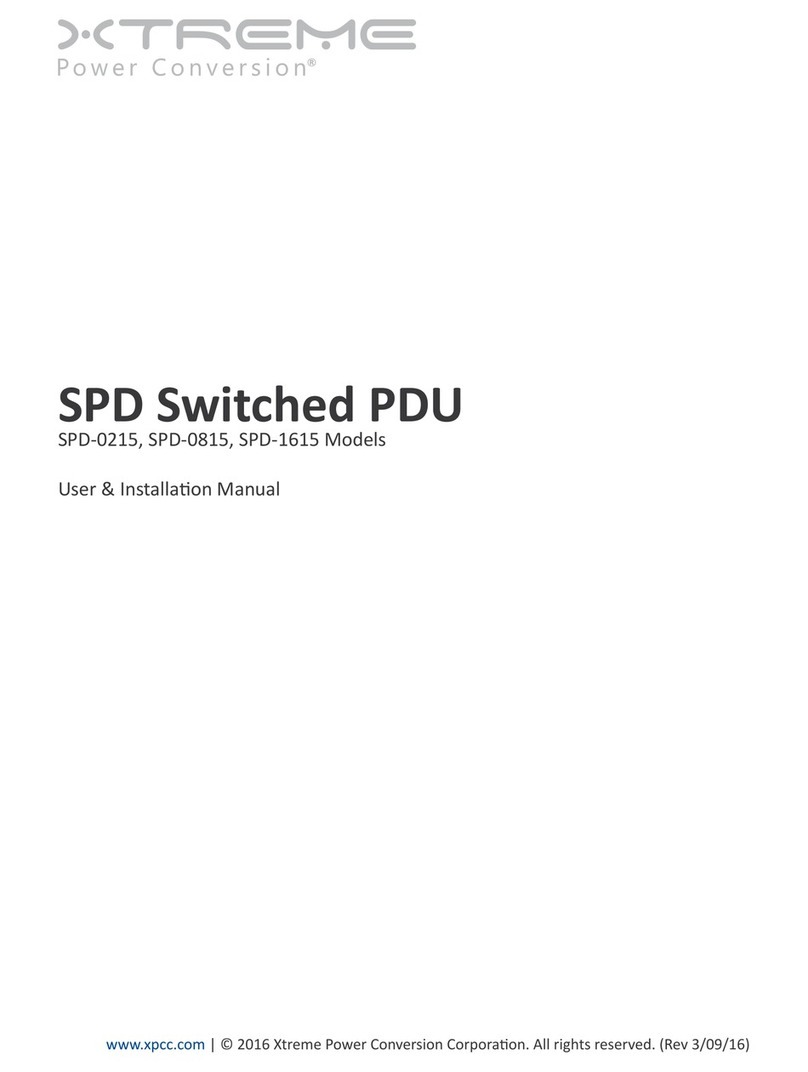
Xtreme Power Conversion
Xtreme Power Conversion SPD-0215 User & installation manual
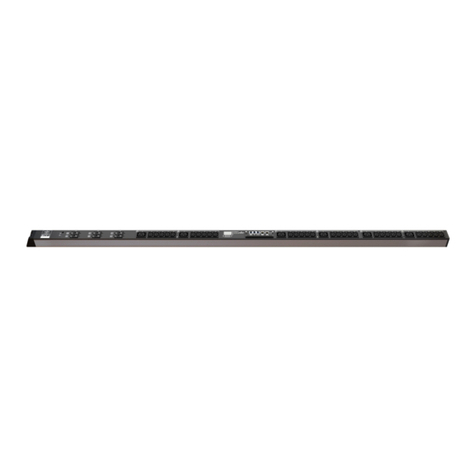
Emerson
Emerson Network Poewr MPH2 quick start guide
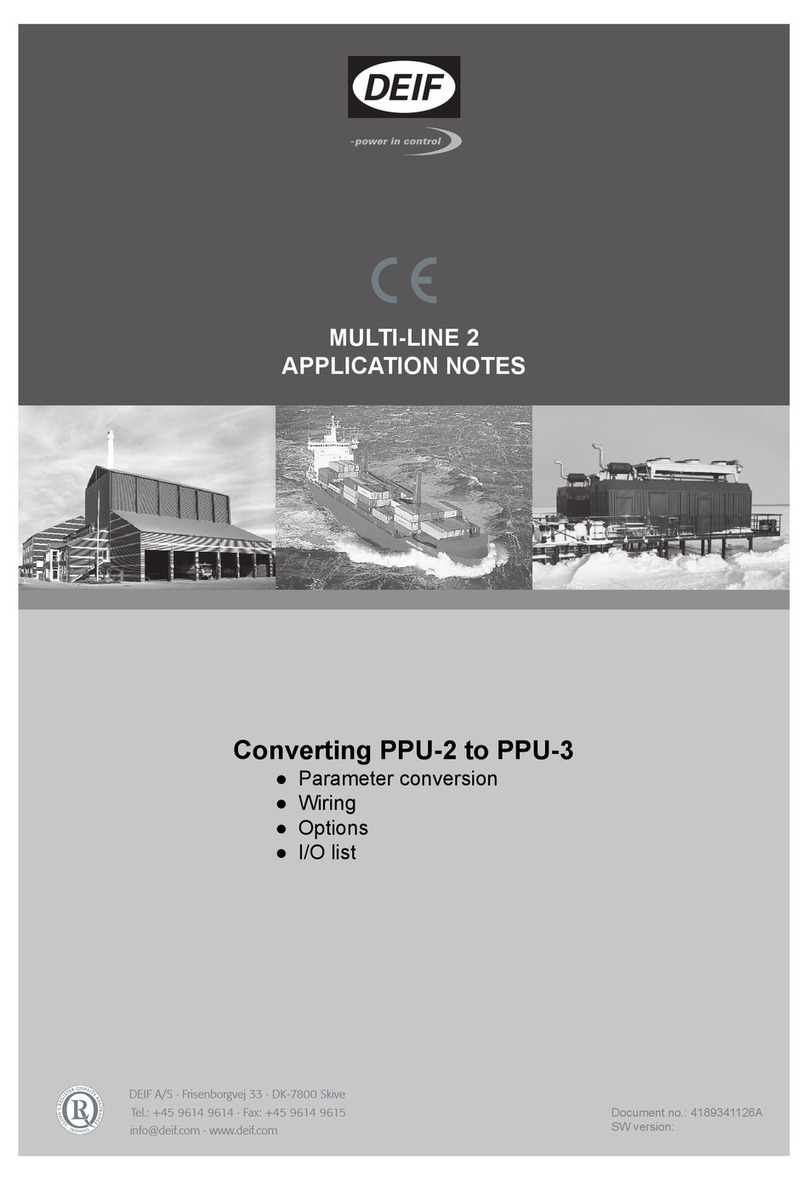
Deif
Deif PPU-2 Application notes
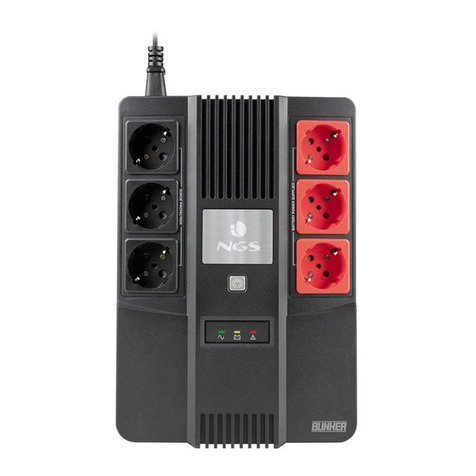
NGS
NGS FORTRESS BUNKER user manual
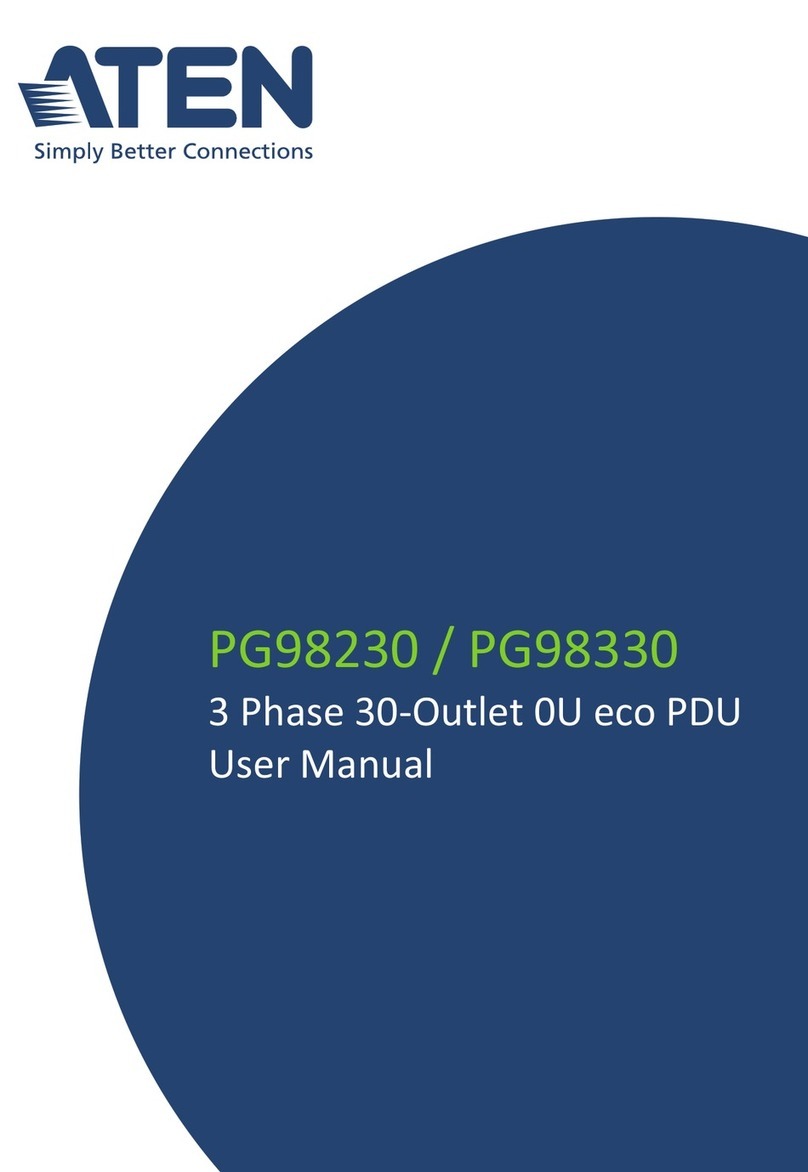
ATEN
ATEN PG98230 Series user manual
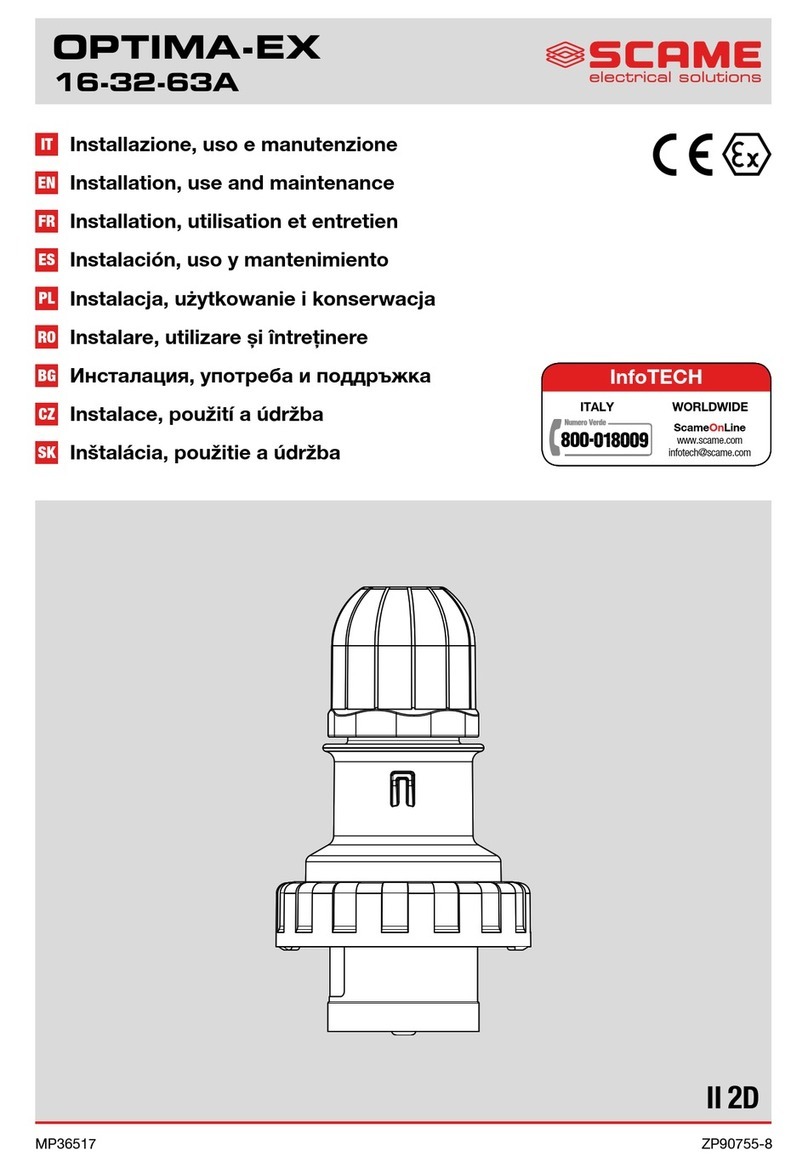
Scame electrical solutions
Scame electrical solutions OPTIMA-EX 16-32-63A INSTRUCTIONS ON INSTALLATION, USE AND MAINTENANCE
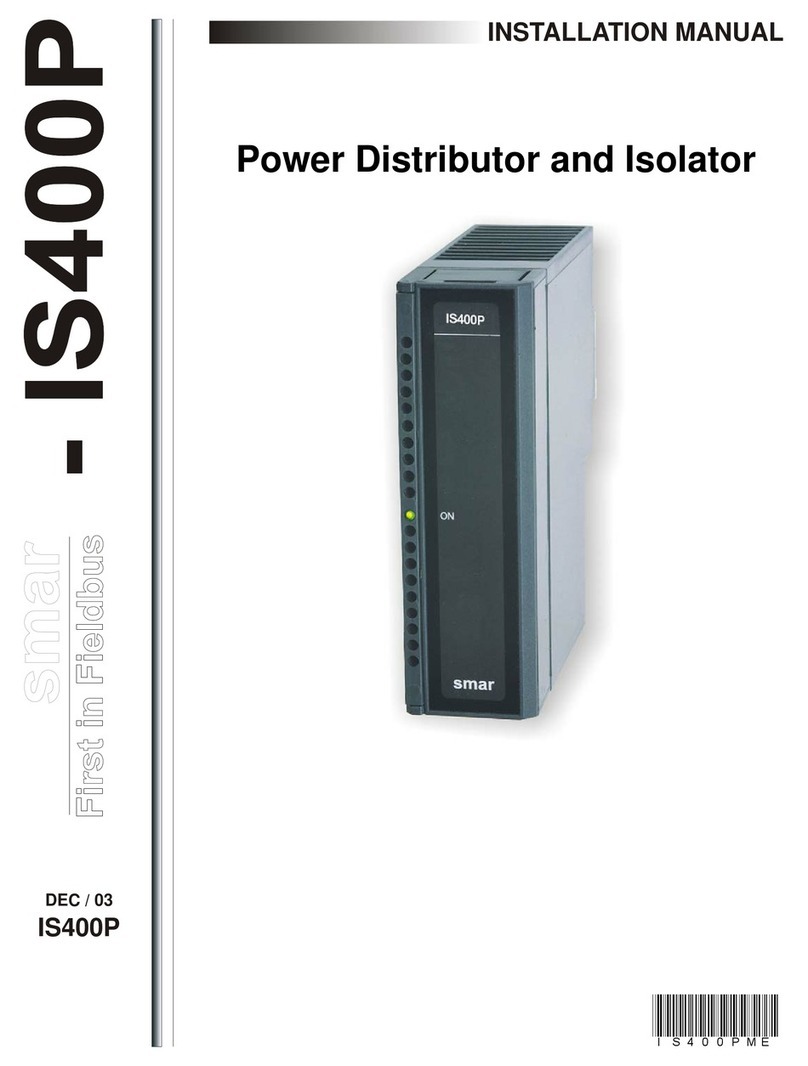
SMAR
SMAR IS400P installation manual
